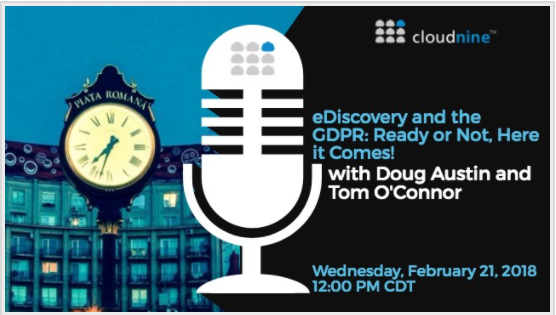Are Cloud Companies Moving Away from Pricing Transparency?: eDiscovery Trends
Last May, I wrote a post asking if pricing transparency is finally happening in eDiscovery. Here’s an article where the trend seems to be reversing – at least for Software-as-a-Service (SaaS, aka cloud) companies in general. And, what the heck is a SaaS “unicorn”?
In his article on OpenView – Why SaaS Companies Are Moving Away From Pricing Transparency (And Why That’s a Bad Thing), by Kyle Poyar (hat tip to Rob Robinson’s Complex Discovery blog for initial coverage of the article), the author compared his findings from June 2016 to his findings from November 2017 for private SaaS “unicorns” regarding price transparency.
What Poyar found was that more than half of private SaaS unicorns (55%) were publishing their pricing online for the world to see in June 2016 (as opposed to only 28% of public SaaS companies). However, in November 2017, he revisited the private SaaS unicorns that he had previously analyzed and found that only 47% publish their pricing, an 8% drop over a year and a half. Poyar took a look at one of those sites at three different intervals – June 2014 (when their pricing was not published), May 2016 (when it was) and January 2018 (when it wasn’t again). When looking at data for new SaaS unicorns, Poyar found that only “a measly” 21% of those publish pricing. So, taken together, just 33% of SaaS unicorns of the 66 he studied currently publish their pricing.
Poyar discusses potential reasons for the shift away from pricing transparency (which Rob covers on his blog). He also identifies three reasons why they should publish pricing, as follows:
- SaaS companies can’t hide anymore: Buyers are almost always going to search “insert category” and “cost” or “price.” If they can’t find that information on a company’s site, they will go elsewhere. The emergence of third party review sites like G2 Crowd, Capterra, Quora and Siftery increasingly put pricing information into the public domain. Wouldn’t you rather showcase that information on your own terms as opposed to being cut out of the buyer journey?
- SaaS companies need to reorient their brands around transparency: Buyers are doing more and more research about vendors before they get in touch with a sales rep. The role of the modern sales rep is going to be more similar to that of an expert or consultant, rather than someone “selling” their products at all costs. To win in this environment, SaaS companies need to establish brands that emphasize trust, helpfulness, and, you guessed it, transparency.
- SaaS companies need to accelerate their sales cycles: Most SaaS startups with an inside sales model can’t waste precious resources on less serious, unqualified prospects or those only looking to be educated on the market. Wasted sales and marketing resources leads to poor unit economics, making it hard for a company to attract future funding. Transparent pricing acts as an important qualification gate that allows sales reps to focus their time on serious buyers.
All excellent points. From an eDiscovery perspective, I noted in last year’s post how Craig Ball’s EDna challenge from 2016 promoted an “apples to apples” comparison on pricing and that’s key. But, do eDiscovery cloud solution providers as a general rule publish their pricing? Feel free to check for yourself – I can only speak to how CloudNine (shameless plug warning!) does it. We do publish our pricing and what our pricing covers and that info is available here. Hopefully, we’ll see a trend toward more price transparency in our industry as I certainly think it’s what the clients would like to see.
BTW, a SaaS “unicorn” is a SaaS company with a billion dollar valuation. Now you know! CloudNine isn’t quite there – yet. :o)
So, what do you think? How important is pricing transparency to you when considering solution alternatives? Please share any comments you might have or if you’d like to know more about a particular topic.

Sponsor: This blog is sponsored by CloudNine, which is a data and legal discovery technology company with proven expertise in simplifying and automating the discovery of data for audits, investigations, and litigation. Used by legal and business customers worldwide including more than 50 of the top 250 Am Law firms and many of the world’s leading corporations, CloudNine’s eDiscovery automation software and services help customers gain insight and intelligence on electronic data.
Disclaimer: The views represented herein are exclusively the views of the author, and do not necessarily represent the views held by CloudNine. eDiscovery Daily is made available by CloudNine solely for educational purposes to provide general information about general eDiscovery principles and not to provide specific legal advice applicable to any particular circumstance. eDiscovery Daily should not be used as a substitute for competent legal advice from a lawyer you have retained and who has agreed to represent you.










